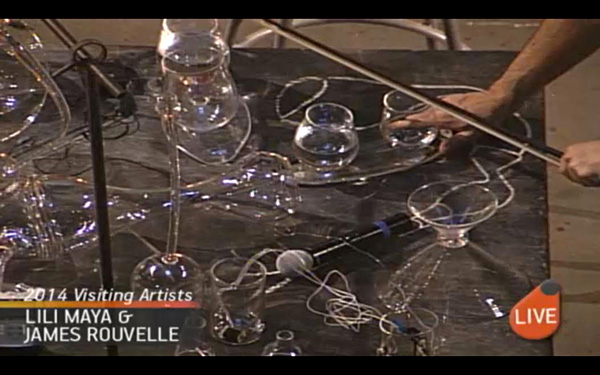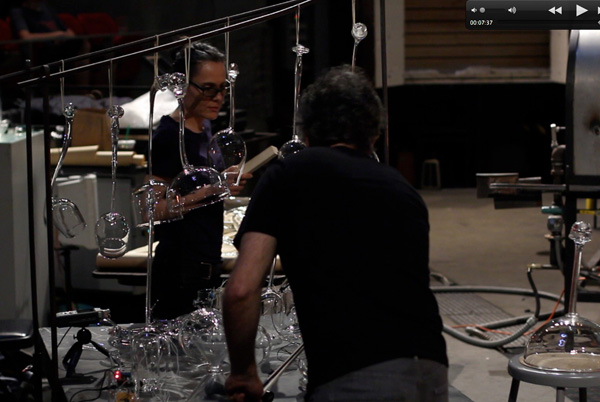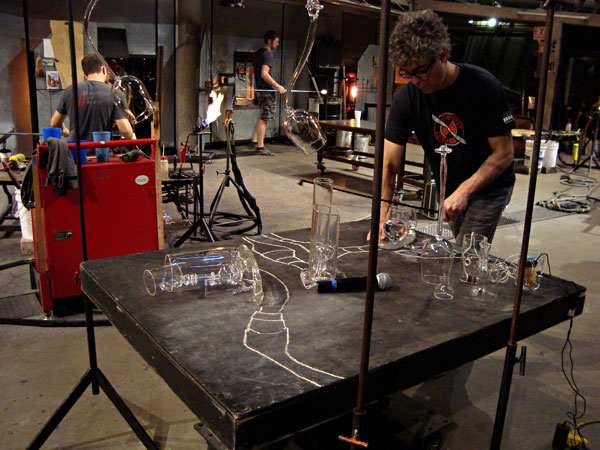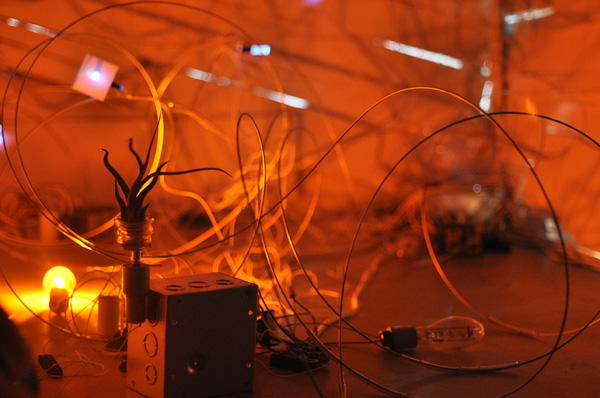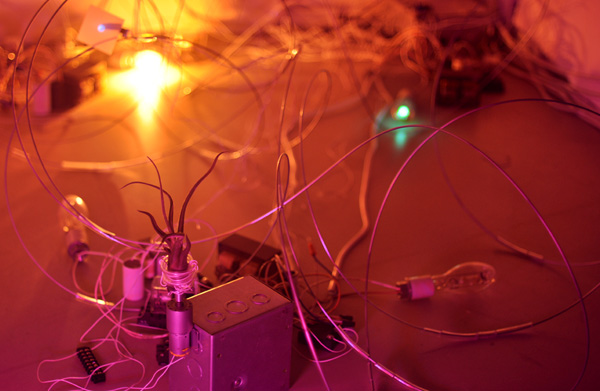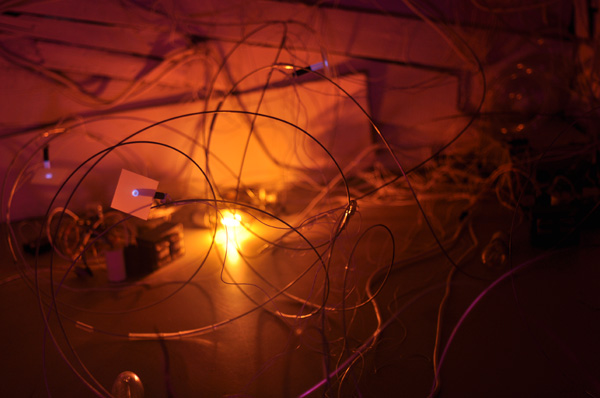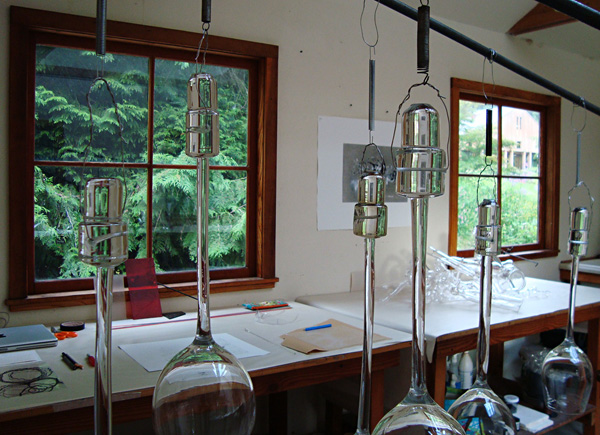
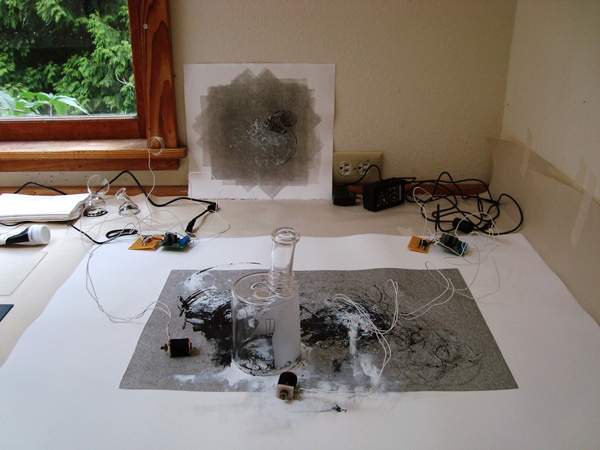
click here for the complete set on Flickr
During our residency at Pilchuck Glass School, we expanded on work started at the Museum of Glass and we developed a series of new works involving sound making objects, printmaking and drawing. We gave two performances during our residency, and some of our printmaking was exhibited during November 2014 at the Pilchuck Glass School Exhibition Space. Additional documentation of our performances and print process are linked below.
Our sound work with glass involves the creation of shapes that can be bowed or struck to produce fundamental pitches and harmonics so that one instrument can sound more than one pitch. Working carefully with our expert gaffers, Manny Krakowski and Netty Blair, we were able to make several variations of vessel shapes that each produced a complex spectrum of tones. We were also able to develop methods of linking two or more objects on a rocking base so that two objects could be played simultaneously by one player and variations on timbre and attack through bowing, striking, rocking were possible.
For our performances we grouped objects in terms of their tunings and timbres making tuning changes (by reshaping, or filling vessels with water) where necessary to create a specific temperament. Once we created a temperament we improvised extensively with it and developed compositions for it. Our compositions are a mix of rehearsed sections/gestures connected by improvisation. While we usually decide how to start and end, the pieces are largely determined during the performance.
In both our sound and print work we used electro-magnet/neodymium magnet setups where the magnets moved in response to changes in the polarities of our electro-magnets that were triggered by fluctuations in the EMF of the space where they were.
As sound, the clinking/tapping of the magnets against glass added a percussive, chaotic element to our compositions; something that fueled our improvisations as the magnets never behaved the same way in each performance.
For the prints, we used the same set of circuitry, vessels and magnets, but as mark making elements. We set the magnets up on inked plates and let them roll until they were covered in ink and had left marks on the plates. We then made several prints with the plates, and then placed the electro-magnet setup on the prints’ surface in the same configuration and let the neodymium magnets deposit the ink they had previously gathered. Freshly inked magnets were also added in the process. As with the sound pieces, the electro-magnet’s polarity oscillates in response to changes in EMF around them.
Our drawings incorporate variations on the shapes of the goblet and the vessel, primary glassblowing forms that suggested to us the physiology of the inner ear. The drawings functioned as non-dimensional starting points for the development of our sculptural and sound making objects.
Our time at Pilchuck was special and we are grateful to the long list of wonderful people who made our experience so memorable including Tina Aufiero, Rebecca Arday, Jim Baker, Ben Wright, our gaffers Manny Krakowski and Netty Blair, our assistants Keunae Song and Anna Masowsky, Alex Gibson in the printshop, Rebekah Birkan, who constructed the amazing frame for the goblets from found metal in the Pilchuck metal shop and Zach Lorenzetti who made music with us and assisted behind the wheel!
